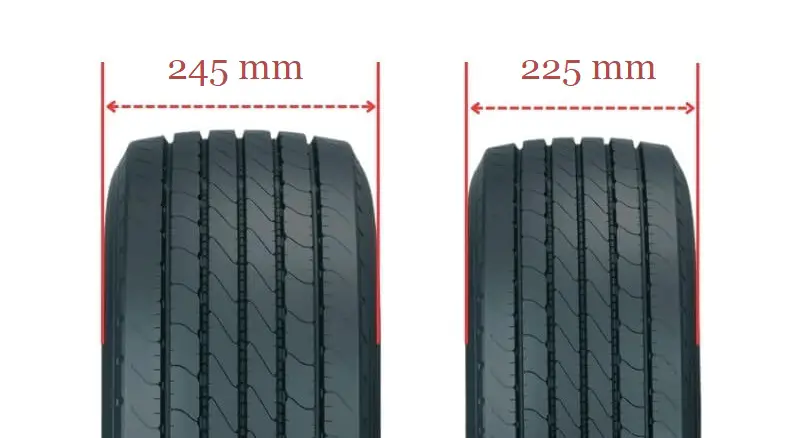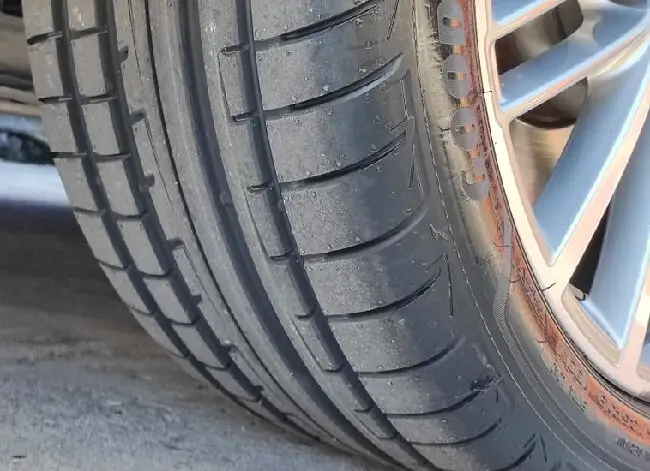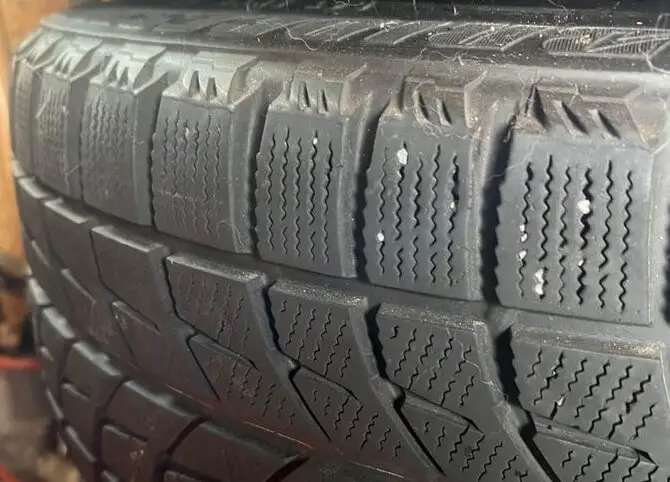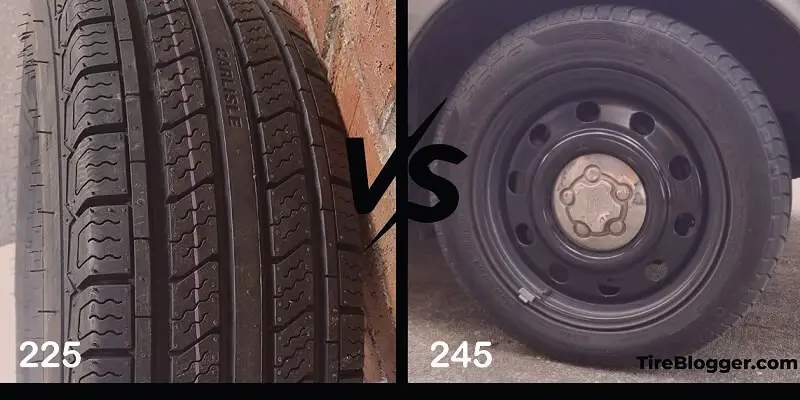225 vs 245 Tires

The section width is the main difference between 245 and 225 tires. A 245 tire is 20mm wider than a 225 tire, which can affect a vehicle’s performance.
245 vs 225 Tires
| 245 Tire | 225 Tire |
|---|---|
| Lower Gas Mileage due to more rolling resistance and rotational mass | Better Gas Mileage due to less contact patch and rotational mass |
| More comfortable ride due to wider contact patch and taller sidewall | Less comfortable but more nimble due to narrower width |
| More aggressive, beefier aesthetic appeal | More aerodynamic, positive impact on vehicle aerodynamics |
| Improved stability and traction, especially off-road | Enhanced handling and quicker response on road |
| Potentially more road noise but dampens vibrations better | Quieter on smooth roads but more vibration felt from road irregularities |
| Endures impacts better but may cause more component wear due to weight | Exhibits even treadwear, potentially longer lifespan |
| Higher load capacity due to larger contact patch | Lower load capacity compared to wider tire |
| Better traction in mud or off-road conditions | Can cut through snow/ice more effectively due to narrower width |
Gas Mileage
With a slightly smaller contact patch and less rotational mass, 225 tires generally confer better fuel efficiency, an aspect crucial for daily commuters and long-distance travelers.
The larger 245 diameter and width might detract from fuel efficiency owing to increased rolling resistance and rotational mass. Larger tires with heavier weight give you less gas mileage.
Ride Comfort
The 245 wider tires generally offer a more comfortable ride than the 225 tires due to their wider contact patch and taller sidewall. However, the 225, being slightly narrower, would be more nimble.
Larger 245 tires give you better off-road performance than the 225 ones, but smaller tires are better for on-road performance.

Aesthetics
The 225 tires contribute positively to vehicle aerodynamics, whereas 245 tires can offer a more aggressive and aesthetic appeal but may hinder aerodynamic efficiency slightly. Those looking for a beefier look tend to prefer the 245.
Handling & Stability
The 225 tires typically offer enhanced handling and quicker response on paved roads due to their narrower width.
Conversely, 245 tires present improved stability and traction over uneven surfaces or gravel, particularly in off-road scenarios.
Noise & Vibration
The 225 tires may provide a quieter ride on smooth surfaces but might transmit more vibrations from road irregularities compared to the wider 245 tires.
Larger 245 tires, especially those with aggressive treads, might generate more road noise but could also dampen vibrations better due to increased air volume and sidewall height.

Durability & Wear
The 225 tires can potentially exhibit even wear and potentially longer tread life due to their shorter contact patch and lighter weight, putting less stress on components.
Larger 245 tires, while potentially enduring more impacts and absorbing more stress on sidewalls, might introduce more wear to vehicle components due to their added weight.
Load Capacity
The load capacity of a tire increases with tire width. As the 245 tire is wider than the 225, it has a larger contact patch, which can distribute the weight over a wider area. This means the 245 has a higher load capacity in most cases.
Adverse Conditions
The narrower 225 tires can sometimes navigate snow and ice more effectively by cutting through to the road surface compared to the wider 245 tires.
However, larger 245 width tires provide advantageous traction in specific off-road or muddy conditions, while 225 would not fare as well.

Difference Between 225 and 245 Tires
The main difference is the section width, with 245 tires being 20mm wider than 225 tires. This affects factors like handling, traction, and fuel efficiency.
Can I Replace 245 Tires With 225?
Yes, it’s possible. The ideal rim width ranges for 225 and 245 tires overlap, allowing for compatibility. However, ensure the aspect ratio and rim diameter match your current setup.
If they don’t, keep the overall diameter difference within 3% to maintain vehicle performance.
Can I Replace 225 Tires With 245
Yes, it’s possible. The ideal rim width ranges for 225 and 245 tires overlap, making them compatible. However, ensure the aspect ratio and rim diameter match your current setup.
If these measurements vary, ensure the overall diameter difference stays within 3% to preserve speedometer accuracy and optimal vehicle functionality.

Can I Put 245 Tires on 225 Rims
Yes, you can put 245 tires on rims designed for 225 tires. The ideal rim width range for 225 tires (7.0-8.5 inches) overlaps with the range for 245 tires (7.5-9.0 inches), ensuring proper fitment and performance.
Can I Put 225 Tires on 245 Rims
Yes, you can put 225 tires on rims designed for 245 tires. The ideal rim width range for 245 tires (7.5-9.0 inches) overlaps with the range for 225 tires (7.0-8.5 inches), ensuring proper fitment and performance.

Meet Caitlin McCormack, a Tire Size Expert and Blogger Passionate About Everything Related to Tires. With Years of Experience in the Tire Industry, Caitlin Has Become an Expert in Tire Sizes and Their Impact on Vehicle Performance.
